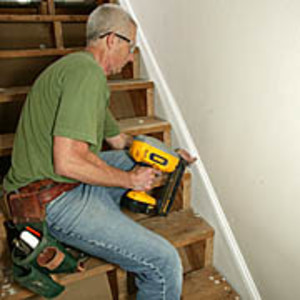Build Like a Pro: Better Staircase Framing
A pro shares a framing method for high-performance stairs that resist cracking, shrinking, and warping.


This is a modal window.
Beginning of dialog window. Escape will cancel and close the window.
End of dialog window.
This is a modal window. This modal can be closed by pressing the Escape key or activating the close button.
This is a modal window. This modal can be closed by pressing the Escape key or activating the close button.

Trusted, in-depth guidance from the pros for framing a durable, code-compliant house
Become a member and get unlimited site access, including the Framing Project Guide.

Dig into cutting-edge approaches and decades of proven solutions with total access to our experts and tradespeople.
Start Free Trial Now
Get instant access to the latest developments in green building, research, and reports from the field.
Start Free Trial Now
Dig into cutting-edge approaches and decades of proven solutions with total access to our experts and tradespeople.
Start Free Trial NowGet instant access to the latest developments in green building, research, and reports from the field.
Start Free Trial Now© 2025 Active Interest Media. All rights reserved.
Fine Homebuilding receives a commission for items purchased through links on this site, including Amazon Associates and other affiliate advertising programs.
Get home building tips, offers, and expert advice in your inbox
Become a member and get instant access to thousands of videos, how-tos, tool reviews, and design features.
Start Your Free TrialDon't miss another expert tip or technique from building pros. Start your free trial today.
Already a member? Log in
Get complete site access to expert advice, how-to videos, Code Check, and more, plus the print magazine.
Already a member? Log in
We use cookies, pixels, script and other tracking technologies to analyze and improve our service, to improve and personalize content, and for advertising to you. We also share information about your use of our site with third-party social media, advertising and analytics partners. You can view our Privacy Policy here and our Terms of Use here.
View Comments
Rick - I like everything you've considered in your approach to stair construction. As an engineer I'd like to comment on one aspect of the stringers. If one does the analysis of loads applied to the treads, the center stringer sees about 63% of the load and each side stringer only sees about 18.5%. Of course this really depends on where each foot lands as one walks up (or down) the stair. Further, by attaching the side stringers to the wall on either side, its deflection under load is prevented. BUT the middle stringer is free to deflect. If it were up to me, I'd use an 1-1/4 rim board LVL for the side stringers and use a double 1-3/4 LVL for the middle. Over the long term, severely limiting the deflection of the middle stringer will limit the flex of the tread, minimizing the 'working' of the tread fasteners to the stringers.
I reworked the stairs to my basement (3 2x stringers & 2x treads & risers) in an attempt to silence the squeaking treads. All connections were nailed, not screwed. Since the usual entry to the house is through the basement, this results in a lot of traffic on this stair. After a decade the squeaks are beginning to return. The ideal resolution would be to completely rebuild the stair, but this is not a project I want to get into in my 7th decade of life.